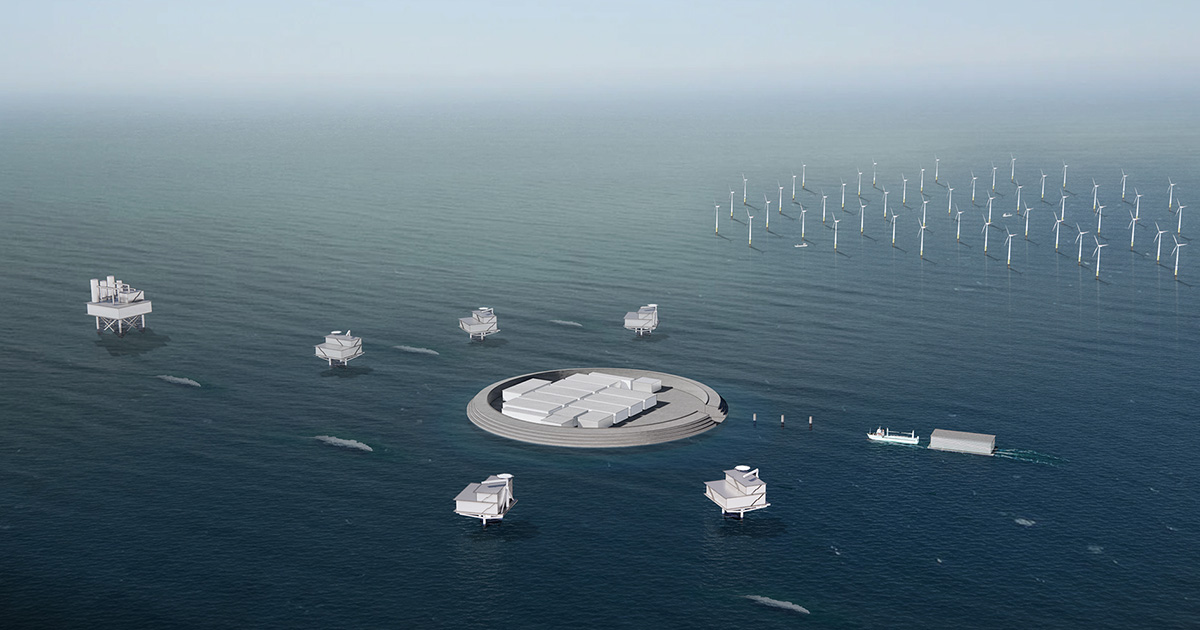In a new project win, Ramboll will develop the electrical infrastructure for the planned energy island in the Danish North Sea. The contract has a value of DKK 225 million over 10 years.
The energy island in the North Sea will be key to powering Europe with renewable energy.
By 2033, the island will have a capacity of 3 GW zero carbon electricity, equivalent to approximately half of Denmark’s electricity consumption today. By 2040, this figure rises to 10 GW – enough to power 10 million homes in Northern Europe.
"The North Sea energy island positions Denmark as a frontrunner in the implementation of renewable energy at large scale. Not only will this transformative project be crucial in helping achieve Denmark's national climate targets, it will also serve as an energy hub for Europe,” says Hannes Reuter, managing director for Ramboll's global Energy division.
“We believe the energy island can be a showcase for innovative and efficient offshore electrical infrastructure, helping pave the way for the future build-out of renewables, including green hydrogen, at global scale," he adds.
Acting as a hub, the energy island will gather the power produced by nearby offshore wind farms and distribute it to Denmark and neighbouring countries. As the client consultant, Ramboll will assist the Danish transmission system operator Energinet in establishing the artificial island’s electricity infrastructure.
The project will be one of the world’s first and largest offshore electrical infrastructure projects of its kind. With a total value of DKK 225 million (approx. EUR 30. million), and an option for subsequent maintenance, the project will employ 35 full-time Ramboll experts across the organisation in the coming 10 years.
“A significant contribution to the green transition”
Developing electrical infrastructure on an artificial island, with a final capacity of 10 GW, is a complex task. Fundamentally, it is a matter of finding new and effective solutions to transport huge volumes of green electricity over long distances to many offtakers in different countries and with the lowest associated energy loss.
“The energy island in the North Sea will be the first of its kind in the world. Deep domain expertise and close collaboration with Energinet are prerequisites to deliver on all the facets of such a complex project, and successfully delivering on an efficient, modular and scalable concept for offshore electrical infrastructure will be a significant contribution to the green transition,” says John Ammentorp, country director for Ramboll’s energy business unit in Denmark.
“The unique solutions we develop for the energy island could be replicated in similar offshore wind energy projects and energy hubs in countries in Europe, Asia and the Americas. We very much look forward to working with Energinet on this project,” he adds.
His enthusiasm is shared by Energinet: “Denmark’s energy islands mark the beginning of a new era within offshore wind energy and will kick off a complete transformation and a closer alignment of the European energy system. Getting great experts on the task is key, so we can solve the many challenges in collaboration,” says Jan Hagenau, senior project manager at Energinet.
The project is Ramboll’s fifth advisory contract related to the energy islands. Ramboll has developed the concept design for modular substations for the North Sea energy island; conducted environmental screenings of the plans for the Bornholm energy island in the Baltic Sea as well as preliminary marine studies the energy island’s environmental impact assessment; and conducted cable route planning on the Bornholm energy island.
About the North Sea energy island
Approx. 100 kilometers from Thorsminde on the country’s west coast, Denmark is building the first of two planned energy islands. The North Sea energy island will consist of an artificial island and platforms housing electrical equipment and cables, connecting and distributing power from offshore wind farms. The energy island will be connected via cable to the Danish peninsula of Jutland, and another cable will also connect the island to neighbouring Belgium. In 2033, the island will have a capacity of 3GW, enough to power 3 million households. Towards 2040, that capacity will be expanded, eventually reaching 10GW. As the system operator, Energinet’s responsibilities include the electrical facilities and cabling, connecting the energy island with surrounding wind farms and the mainland.
Source: Energinet
How much offshore wind does Europe produce?
- Europe’s wind power capacity reached 255 GW in 2022: 225 GW onshore and 30 GW offshore.
- Nine EU countries including Denmark have pledged to make the North Sea the green power plant of Europe
- Their aim is to establish 120 GW offshore wind by 2030 in the North Sea, rising to at least 300 GW by 2050.
Source: Wind Europe


